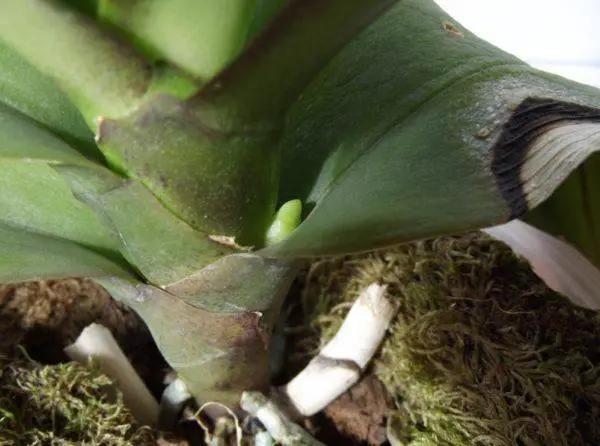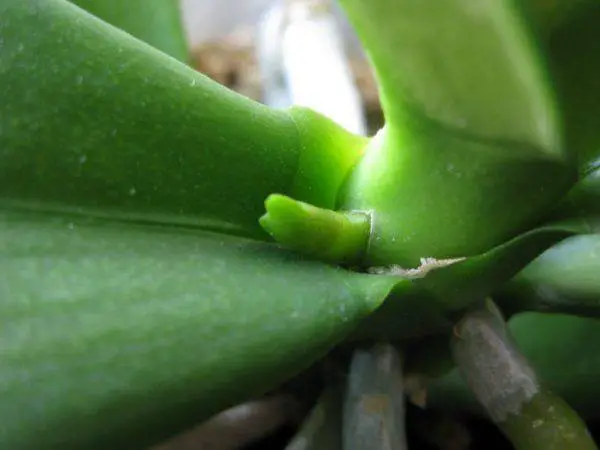The development of a spike on an orchid is an important stage for a plant. And sometimes the grower can wait a long time for his appearance but from the moment the buds of a tropical plant open, all the care he takes to pay off with interest.
But if the care is organized incorrectly and the basic rules are not followed, you can not wait for the flower spike. Therefore, if it is absent for a long period, it is necessary to revise the rules of care and find a mistake in order to correct it and give the flower everything it needs.
Let’s find out in more detail below how a flower spike appears in an orchid.
What Is An Orchid Spike?
The spike is that part of the plant on which the buds will form and, when dissolved, please their grower.

The spike plays an important role in the life of the orchid.
If a flower shoot has appeared on the plant, then this state can be called the active phase of plant development. At this point, the plant must be fed with fertilizers intended for orchids. A photo of how orchids release flower stalks can be seen above.
IMPORTANT! All fertilizers are applied only after watering so that the velamen on the root system of the orchid does not burn out.
what does an orchid flower spike look like?
At the time of appearance, the spike can be confused with other parts of the plant. A novice florist wonders what appeared on his plant:
- spike;
- Root;
- Or baby?

The spike begins to grow from the axils of the leaf plate. You also need to carefully examine the tip of the growing kidney:
- The flower shoot will have a pointed end;
- And the roots and children are a more blunt end.
And most importantly – this is a scaly coating at the arrow, and the velamen on the roots has a smooth structure.
Where can he come from?
How does an orchid spike grow? It must be remembered that the spike develops from the sinus of the leaf of the plant. Sometimes he gets out of the growth point.
All other processes appearing from the stem and other parts (root areas) can be roots or children.
A spike can also appear when re- blooming from a waiting bud of an old flower shoot. It grows sideways from the main stem and does not develop many buds. Read out Do You Cut Off Dead Orchid Stems?
The spike emerges from the axil of the orchid.
Sometimes the spike develops at a fast pace, which indicates that the care is organized correctly. But it happens that the escape:
- At first, it slows down in development;
- And then it starts to turn yellow and dry out.
This suggests that the flower receives little light and nutrients. On average, the development of a spike can take up to 3 months.
IMPORTANT! With sufficient lighting, watering and fertilizing, the shoot will form at the required pace, and the flowers that have blossomed on it will reach their maximum size.
Favorable time for the growth of new shoots
Many beginners ask questions: when will the orchid release a spike and how long does a new spike grow?
All orchid plants begin to bloom at different times relative to their age. You can not demand the appearance of a spike from a young rosette.
There are plants that bloom in the third year of life, and there are those whose age should be older.
How long does the spike grow? It depends on the type. Some bloom all year round, regardless of the change of seasons.
Others only at certain times :
- Phalaenopsis blooms all year round with proper care;
- Cymbidium from mid-autumn to late February;
- Dendrobium blooms from October to early January.
But also do not forget that it all depends on the cultivation of orchids :
- Watering was not done on time, the flowers can dry out, and with them the flower shoot.
- In the absence of beneficial nutrients, the shoot will be short.
- Also, for the development of the arrow, high humidity and good diffused sunlight are necessary.
- When buds appear, the top dressing is completely removed, as this can greatly reduce the flowering period of the orchid.
orchid flower spike care: before and after Flower spike appears
Cultivation of a flower before the appearance of an escape follows the standard path :
- Lighting should be diffused. It must be remembered that already in April the flower is removed from the windowsill of the south direction; In order for a healthy spike to grow, it is necessary to create suitable conditions.
- Watering is organized in such a way that between waterings the bark dries out for a couple of days, which will allow the root system to participate in photosynthesis;
- There must be access to fresh air and, at the same time, there must be no draft. This is especially detrimental in the cold season since frostbite is not treated, the damaged parts are simply cut out;
- Humidity should be at the level of 65-85%;
- Topdressing is carried out with specialized fertilizers, which are labeled “For orchid plants”. Others can burn the root mass and require a long resuscitation of the plant.
When a flower shoot appears, the conditions change slightly and you need to pay attention to the parameters described below for caring for an orchid.
Reduce watering
Watering begins to reduce as soon as the arrow begins to develop. But this does not mean that the flower should be dried out.
When the spike appears, it is necessary to reduce watering.
Just between waterings, we leave not 2-3 days of drying, but 5. That is, if watering was once a week, now it is watered once every 2 weeks.
Features of top dressing
When a flower shoot appears, the top dressing is slightly reduced. And when the buds begin to form, they stop completely. Because fertilizing greatly shortens the flowering period.
Lighting and temperature
If the spike began to form in the autumn-winter period, the flower is placed on the windowsill south. If it is not there, then you need to take care of additional lighting, since without sufficient lighting the shoot will not develop.
The air temperature in the room for proper development should be within 23-26 degrees Celsius. A cold snap may well slow down development and, if measures are not taken, the shoot will begin to dry out.
IMPORTANT! Having familiarized yourself with the basic requirements for the formation of a flower spike, you must adhere to them. And we must remember that the number and quality of buds is affected by the care of the plant in the previous four months, and not by top dressing at the last moment with the growth of the shoot.
what to do if orchid spike stopped growing?
In order for the flower spike to grow and not slow down growth, you need to follow the main parameters of care:
- Lighting if it has decreased for natural reasons, it is necessary to introduce additional lighting with the help of illumination with special lamps for plants; In order for the flower-bearing spike to grow well, all care conditions must be observed.
- Watering should be reduced compared to the usual mode. But do not dry the flower to the state of the desert;
- The temperature must be within the limits necessary for the vegetative growth of the plant;
- It is worth remembering to fertilize on time and according to all the rules.
By following these rules, the plant will surely delight its grower with beautiful tropical flowers.
Multiple Flower Spikes On Your Orchid at same time
How to make an orchid release several flower stalks? The orchid will not produce more than 3 spikes. More often, one shoot is produced, on which flowers bloom.
But if the flower is old enough and has 8-10 leaves in its rosette, then there is a chance of 2-3 spikes appearing.
But this is a stress for the plant, and sometimes after such an abundant flowering, there is a breakdown in orchid plants. But in our conditions, which even experienced flower growers often create, more than 2 flower stalks do not appear on flowers.
Conclusion
The spike is an important moment in the development of the orchid, and in order for it to appear and form correctly, the grower must properly cultivate his plant. And, adhering to the basic rules described in the article, you can be sure of the appearance of a flower shoot.
